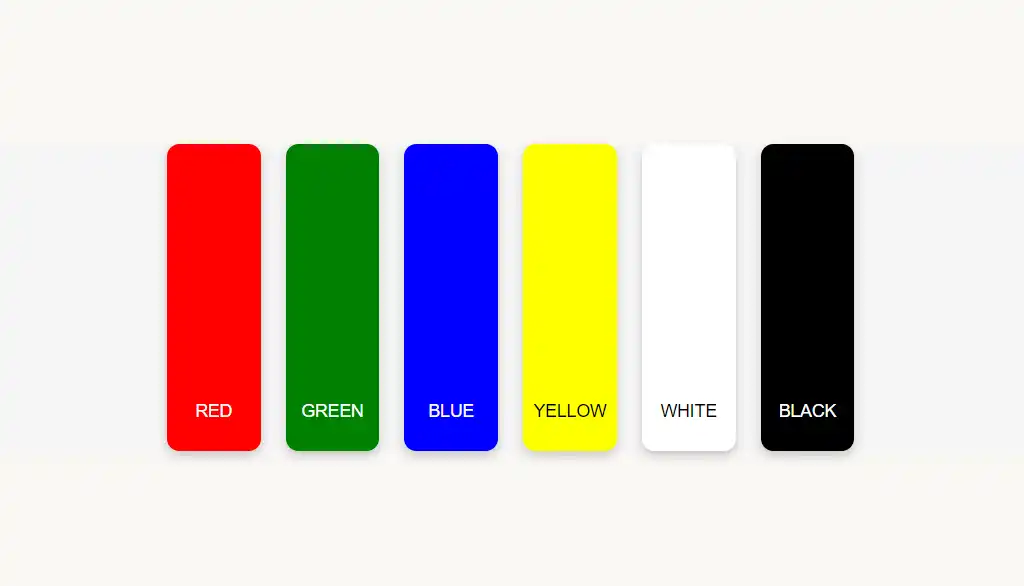Colors have an extraordinary power to influence emotions, associations, and purchasing decisions, making them one of the most critical elements in marketing and advertising strategies. When used effectively, color can capture attention instantly and evoke desired feelings, helping brands resonate with their audience. This section focuses on primary colors used in marketing, their meanings, and effective ways to apply them.
Why Do Colors Matter?
Research on color psychology has shown that colors can evoke emotions within seconds. Roughly 90% of purchasing decisions are driven by visual impressions, with color playing a central role. Companies aware of this power design their logos, packaging, and advertisements with the intended emotional response in mind. Colors not only influence brand perception but can also embody brand values such as trust, luxury, energy, safety, and modernity.
Key Colors and Their Marketing Significance
Each color carries specific emotions and associations. Here’s a look at some of the most popular colors and their applications in marketing:
Red – Represents energy, excitement, and even urgency. Red is often used in fast food ads and sales promotions, as it can accelerate decision-making.
Blue – Associated with trust, calm, and professionalism, blue is a favorite among finance and tech companies as it instills a sense of security.
Green – Symbolizing nature, health, and freshness, green is popular in eco-friendly, health, and food-related advertisements, ideal for promoting sustainable values.
Yellow – Represents joy, optimism, and energy. It catches the eye, making it effective in callouts and special offers, drawing attention to specific products or services.
Black – Exudes elegance, luxury, and sophistication. Black is frequently used by high-end brands, enhancing the appeal of luxury items like jewelry and premium products.
White – Symbolizes purity, simplicity, and modernity. Often paired with other colors, white adds clarity and elegance, frequently used in technology and fashion ads.
How Colors Influence Consumer Behavior
Colors affect our senses subconsciously, shaping our perception of a brand and influencing purchasing behavior. For example:
Quick Reactions – Red and orange, as intense colors, can accelerate reactions, which is why they are often seen on “Buy Now” or “Check Offer” buttons.
Building Trust – Shades of blue and green are favored by finance and healthcare sectors as they evoke a sense of trust and reliability.
Creating Mood – Colors like purple or dark blue can create a sense of luxury and mystery, making them popular in premium product ads.
Driving Urgency – Colors can also motivate immediate action. Sale ads often use contrasting colors like red and yellow to create a sense of urgency.
Examples of Effective Color Use in Advertising
Colors are a powerful storytelling and experience-creating tool. Here are examples of how well-known brands use color psychology in advertising:
- Coca-Cola – Leverages a bold red that symbolizes passion and energy. This cohesive color identity has helped Coca-Cola evoke emotions and build brand loyalty over generations.
- Apple – Known for its iconic use of white and gray, Apple’s color palette conveys minimalism, modernity, and sophistication, highlighting product elegance.
- McDonald’s – Uses a mix of red and yellow to capture attention and stimulate appetite, making it ideal for the fast-food sector.
- Starbucks – The green color scheme of its logo and interiors reflects health, sustainability, and relaxation, encouraging customers to visit frequently.
Tips for Businesses: How to Use Colors Effectively in Advertising
Define the Emotion You Want to Evoke – Choose colors based on the message of the ad. For campaigns focused on trust, opt for stable colors like blue or green.
Test Colors for Different Audiences – Colors may be perceived differently across cultures and age groups, so testing is essential to determine which hues resonate best with your target audience.
Keep Color Consistency with Brand Identity – Maintaining a consistent color scheme across all marketing materials strengthens brand recognition. If your brand embodies luxury, avoid bright colors that may not align with its character.
Use Contrast to Capture Attention – To make essential elements like CTAs and headlines stand out, employ contrasting colors that draw the eye.
Color psychology in marketing is a fascinating field that sheds light on how colors shape consumer behavior. When used strategically, colors in advertising can help brands build recognition, create emotional connections with their audience, and accelerate purchasing decisions.
